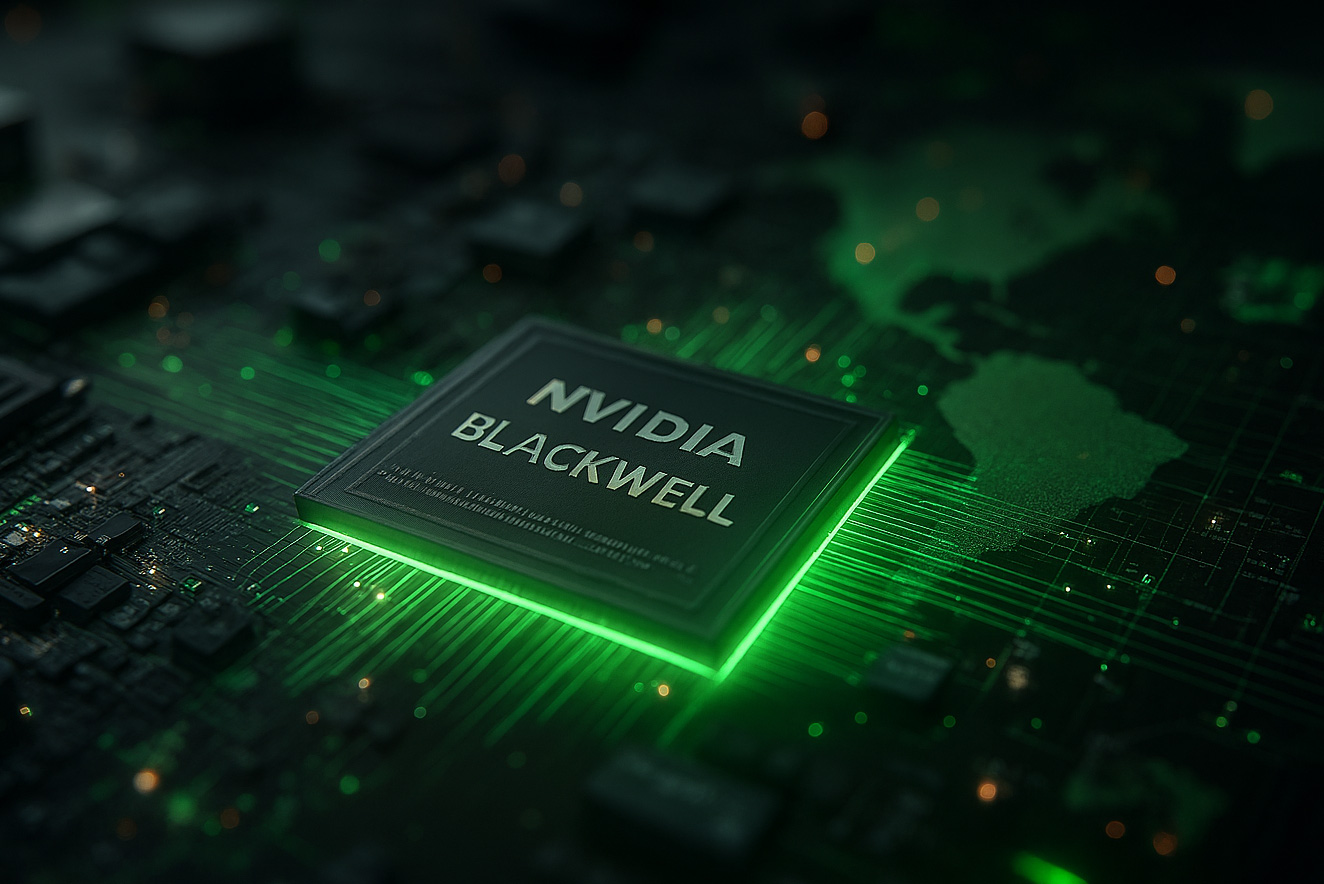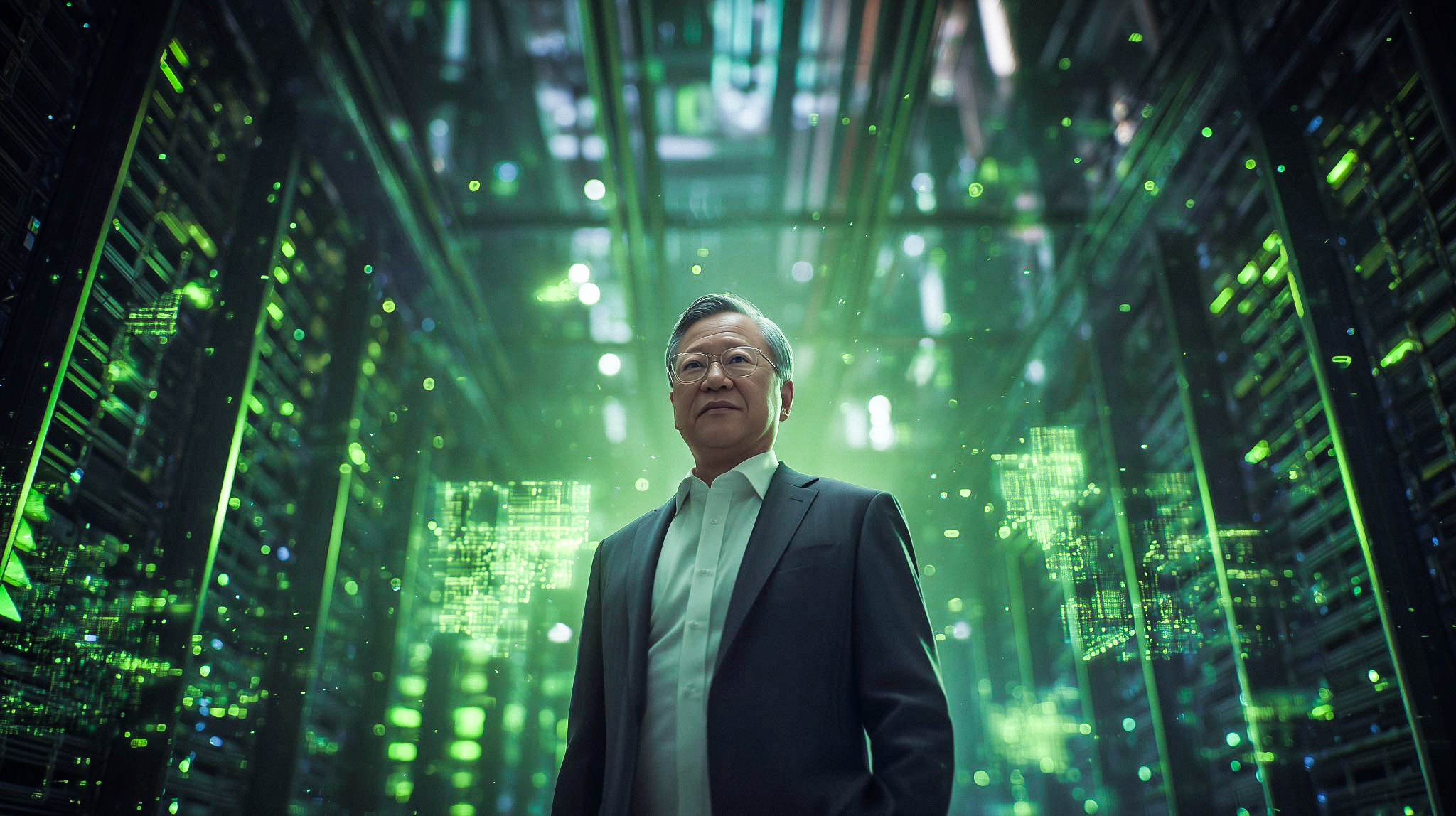“AI is the most powerful technology force of our time — and NVIDIA is at the heart of it.”
— Jensen Huang, CEO of NVIDIA
NVIDIA continues to dominate the AI space with new hardware, bold partnerships, and a surprising geopolitical pivot. In this roundup of NVIDIA AI news, we cover everything from groundbreaking chips to geopolitical moves.
NVIDIA AI News: Blackwell Ultra Ushers in a New Era of Chips
NVIDIA’s new Blackwell Ultra GPUs are changing the AI hardware game. These chips deliver up to 10× faster inference speeds for large models, thanks to support for FP4 precision and up to 288GB of HBM3e memory.
But that’s not all. NVIDIA also announced its Rubin architecture and Kyber racks, a vision for future AI data centers that can consume up to 1 megawatt per rack. These innovations push the boundaries of what’s possible in AI computing.
In addition, desktop-sized AI workstations like the DGX Spark bring supercomputing power to individual developers. This makes advanced AI tools more accessible than ever before.

NVIDIA AI News Expands with China Comeback and Global Partnerships
After months of export restrictions, NVIDIA’s H20 GPU is now returning to China. With U.S. licenses pending, the move could unlock billions in revenue. Chinese tech giants are already lining up for access.
Meanwhile, NVIDIA is expanding globally. New AI infrastructure projects are launching in Saudi Arabia, Europe, and beyond. Through partnerships with Microsoft, ServiceNow, and local governments, NVIDIA is helping build national AI capabilities.
As TechCrunch reported, this strategy aims to “embed NVIDIA into the foundation of global AI ecosystems.”
AI Software Stack and Open Ecosystem Moves
While NVIDIA dominates in hardware, it’s also expanding its influence through software. For example, its CUDA and TensorRT libraries are now widely adopted across AI development workflows. These tools help developers optimize performance without needing to switch hardware platforms.
In addition, NVIDIA recently announced that it will open source parts of its orchestration stack — a move aimed at making its tools more accessible and reducing regulatory pressure. This initiative follows the acquisition of Run:AI, an Israeli startup specializing in AI workload management.
Moreover, NVIDIA’s collaborations with ServiceNow and Microsoft are bringing optimized AI models to enterprise customers. This shows how the company is embedding itself not just in research labs, but also in business operations across the globe.
As a result, NVIDIA is positioning itself as a full-stack AI company, offering everything from silicon to cloud-ready solutions. That said, it still faces challenges from rivals working on open hardware and alternative architectures.
Why It Matters
NVIDIA doesn’t just build chips — it builds AI foundations. From cloud-scale servers to small desktop units, the company is making AI infrastructure faster, more powerful, and more available.
Of course, competition is growing. Companies like AMD, Google, and Amazon are working on their own AI accelerators. Even so, NVIDIA currently powers more than 80% of AI data centers.
Want more?
For more on how tools like these can help your business, check out our guide to AI tools for small businesses.



